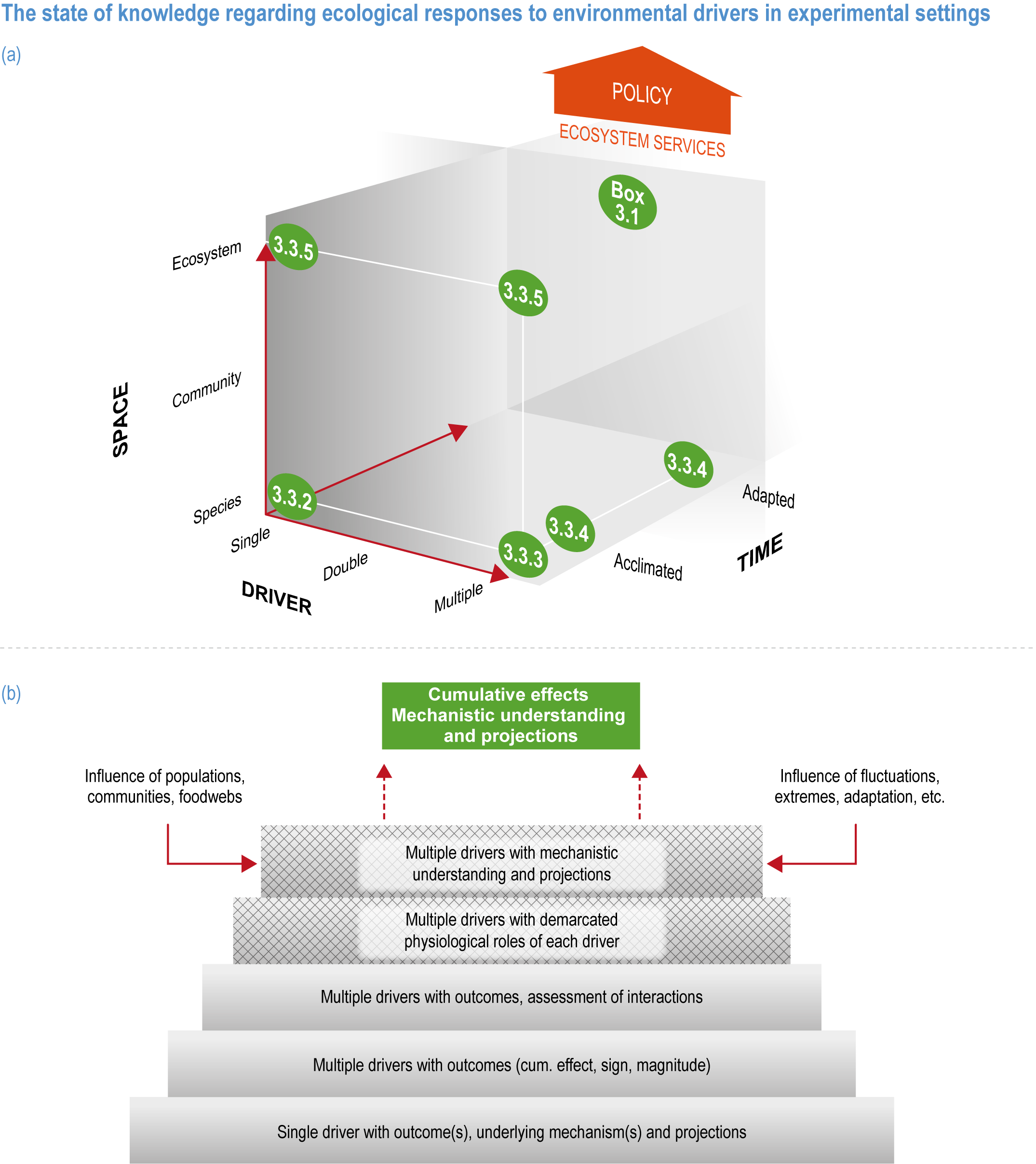Figure 3.8
Figure caption
Figure 3.8 | The state of knowledge regarding ecological responses to environmental drivers in experimental settings.
(a) Schematic indicates where themes are discussed within Section 3.3, and how they jointly inform policy. (Adapted from Riebesell and Gattuso, 2014).
(b) The hierarchy of accumulating physiological knowledge (grey layers), from single (e.g., Pörtner et al., 2012) to multiple drivers, and from simple outcomes (e.g., Sciandra et al., 2003), interactions among drivers (e.g., Crain et al., 2008) and identification of physiological roles of drivers (e.g., Bach et al., 2015) to mechanistic understanding of drivers (e.g., Thomas et al., 2017). At present, the upper grey layer has been achieved, in full, for two drivers (e.g., temperature and nutrient concentrations), with validation of dual controls on phytoplankton growth rate (Thomas et al., 2017). Hatched layers denote major advances since WGII AR5 Chapter 6 (Pörtner et al., 2014). The green layer indicates the level of understanding potentially needed to project the response of marine life subjected to multiple drivers. Red horizontal arrows indicate the influence of confounding factors on our current understanding, including population genetics, fluctuating oceanic conditions or extreme events.
